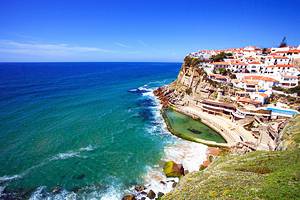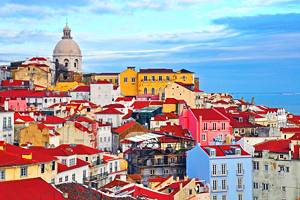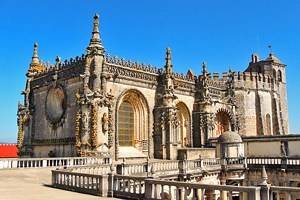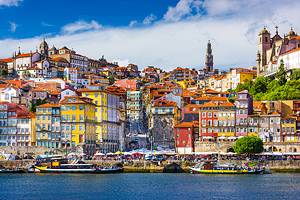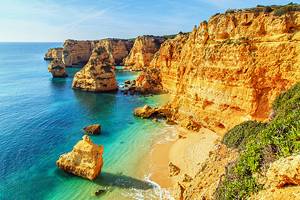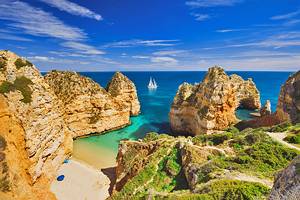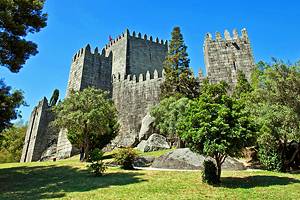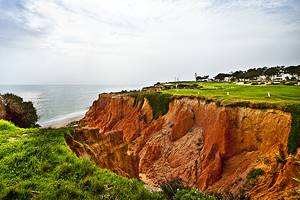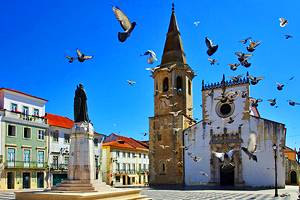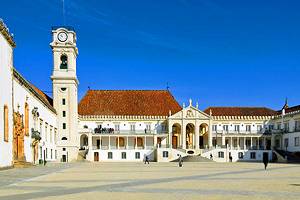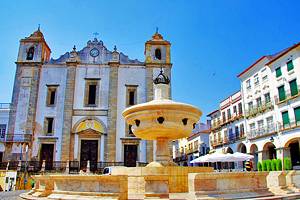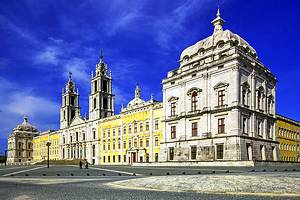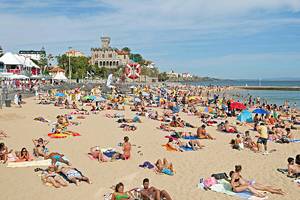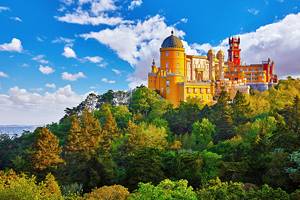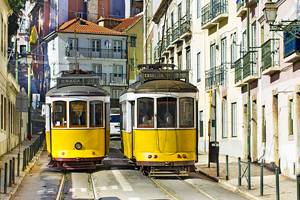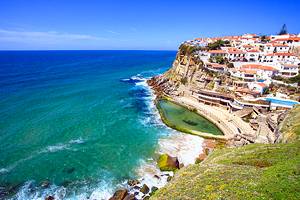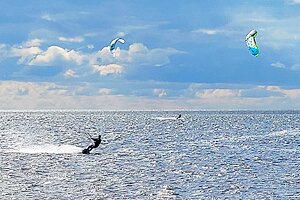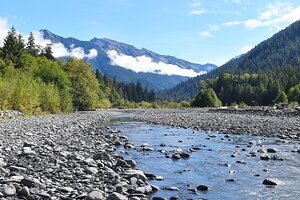Where to Go in Portugal: 7 Great Itineraries
Portugal is a joy to discover. A small country occupying around one-sixth of the Iberian Peninsula, it's bordered by the Atlantic Ocean to the west and south and by Spain to the north and east. Within these frontiers lies one of Europe's friendliest and most beguiling nations.
Three international airports - at Lisbon, Oporto, and Faro - make planning a trip to Portugal fairly straightforward. The country's geography allows easy travel throughout its three main regions, the southern, central, and northern provinces, and there are no great distances to consider.
While cities, larger towns, and the developed coastlines benefit from an efficient public transport network, Portugal is best explored by private vehicle. This is especially so if heading inland, where rail and bus services in more isolated regions are infrequent or simply non-existent.
Portugal offers many diverse destinations and experiences. There are warm and sunny resorts; noble and historic cities; traditional villages and ancient hamlets; spectacular mountains; vast, empty plains; and long, winding rivers. And there's always the ocean - Portugal is, after all, a seafaring nation.
Plan your travels with our list of top Portugal itineraries.
- 1. The South Coast: Exploring the Algarve
- 2. Southern Portugal: Discovering Baixo Alentejo (Lower Alentejo)
- 3. Southern Portugal: Journeying through Alto Alentejo (Upper Alentejo)
- 4. Lisbon Area: Sightseeing and Excursions
- 5. Central Portugal: Coast and Countryside
- 6. Oporto and Beyond: Rivers and Valleys
- 7. Northern Portugal: Cities and Mountains
- Map of Where to Go in Portugal: Great Itineraries
1. The South Coast: Exploring the Algarve
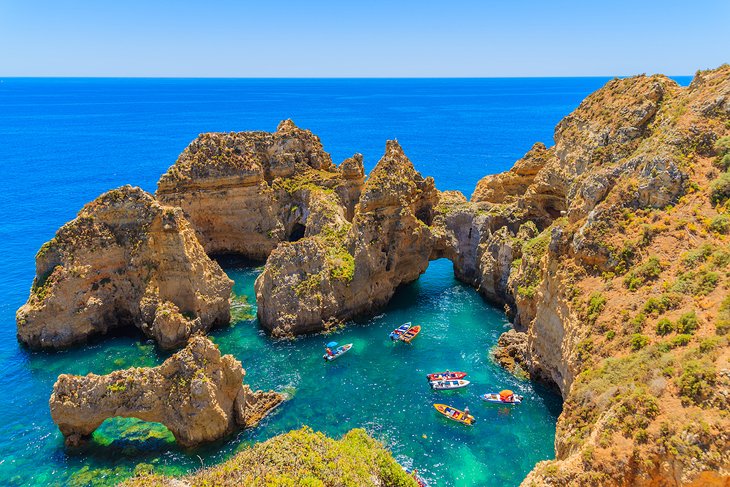
Highlights: Faro, Parque Natural da Ria Formosa, Tavira, Lagos, Sagres, Parque Natural do Sudoeste Alentejano e Costa Vicentina, Monchique, Silves
Faro International Airport provides the ideal gateway to the Algarve, the southernmost province of Portugal. The region deserves at least a week of your time and is best explored by car. But it's worth spending an overnight in the regional capital before journeying farther.
Begin your sightseeing with a leisurely stroll through the Cidade Velha (Old Town), Faro's historic quarter. The city overlooks the beautifully serene Parque Natural da Ria Formosa. Leave some time to take a boat trip along the river and lagoons of this wildlife haven - one of Europe's top wetland habitats.
The route east out of Faro eventually brings you to the picturesque town of Tavira, known for its churches, castle ruins, and Roman bridge. Depending on your schedule, you can either carry on east towards the Spanish border, passing several excellent golf courses along the way, or turn around and take the motorway all the way to Lagos.
In summer, the fabulous beaches fronting this lively resort are packed with sun worshippers, and the destination is known for its exciting water sports options. Stay a couple of days - the narrow streets and lanes are very foot friendly, the coastal hikes bracing, and a visit anytime of year brings its rewards.
Farther west, remote Sagres gives you a chance to immerse yourself in the legend of Prince Henry the Navigator and Portugal's Golden Age of Discovery. From the town's imposing sea fort, you can admire the stark, windswept Parque Natural do Sudoeste Alentejano e Costa Vicentina. The wild Atlantic coastline draws surfers and travelers of a more independent spirit.
A sinewy drive north takes you through the park to sleepy Aljezur. The route inland from here snakes through woodland spiced with eucalyptus and up to the mountain hamlet of Monchique, famous for its spa. To crown your day, carry on up to Fóia for magnificent views of the entire region.
The hairpin descent back towards the coast allows an opportunity to visit Silves, seemingly surrounded by tangy-scented orange groves. The big draw here is the castle - one of the greatest monuments of its kind in Portugal.
Again, depending on time, you can pick up the motorway at Lagoa for Faro or choose the B road and take in places like Portimão, the Algarve's sardine capital; neon-lit Albufeira; Vilamoura and its snazzy marina; and charming Loulé, renowned for its busy market and traditional handicrafts.
2. Southern Portugal: Discovering Baixo Alentejo (Lower Alentejo)
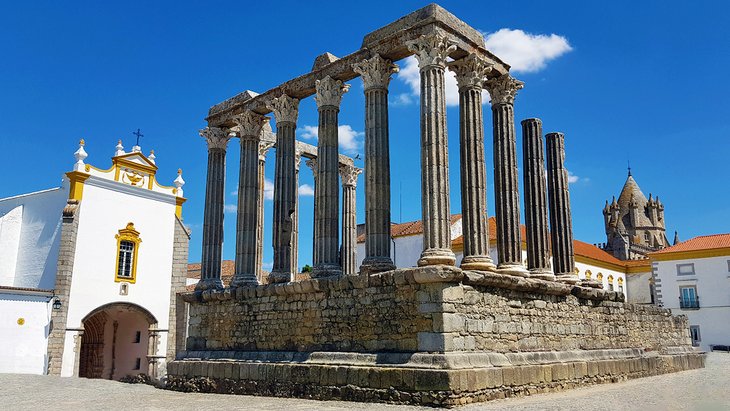
Highlights: Évora, Monsaraz, Barragem de Alqueva, Serpa, Mertola, Beja
The Alentejo is vast, occupying nearly a third of Portugal. Its size means that a vehicle is the only realistic means of exploring, but there are numerous possibilities for itineraries. The southern, or lower, half of the region is characterized by a rolling landscape.
Évora, the regional capital, is the obvious starting point, and you should allow two days to discover this enchanting destination, the historic center of which is a UNESCO World Heritage Site.
The surrounding area lends itself to a convenient circuit, and any tour should take in medieval Monsaraz and its evocative 13th-century castle, one of the top castles in Portugal. From its weatherworn ramparts, you can gaze over another impressive landmark, the enormous Barragem de Alqueva, the largest manmade reservoir in Europe.
At lakeside Amieira, you can hire out a houseboat for a day, or even a week - a great sightseeing option, especially with families. The next destination of note is the walled town of Serpa. Achingly scenic with its own castle, 11th-century aqueduct, and a maze of cobblestone streets, this is perfect coffee break territory.
Allow more time - perhaps even an overnight - to absorb Mértola, located farther south and one of the most fascinating places to visit in the region. Designated a vila museu, or museum town, this riverside community is steeped in history. Ten museums, a castle, and the River Guadiana make sightseeing an adventure.
Beja makes a fitting finale to your Lower Alentejo tour. This is the largest town in the area and a busy agricultural hub. Its cultural draws include a lovely old convent and a handsome castle dating from the 13th century, both worth lingering over.
If time is on your side, the straightforward drive back to Évora should allow for a detour to little-visited Viana do Alentejo, a charming backwater where the 21st century has been largely bypassed.
3. Southern Portugal: Journeying through Alto Alentejo (Upper Alentejo)
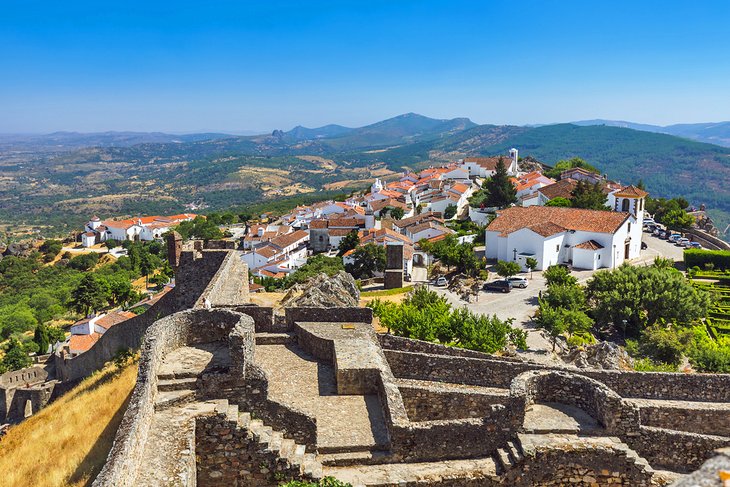
Highlights: Évora, Vila Viçosa, Portalegre, Serra de São Mamede, Castelo de Vide, Marvão
The Upper Alentejo embraces a significantly different geography to that of the region's southern half and offers a dissimilar but no less appealing sightseeing experience.
The ancient city of Évora, the regional capital, is a good base from which to explore, but you'll need a vehicle to cover the distances involved. Fortunately, the roads are good and relatively traffic free, and you can motor at leisure to picturesque villages like Estremoz and Évoramonte before arriving at Vila Viçosa, where you can join a guided tour of the town's sumptuous 16th-century Paço Ducal, the royal palace.
You'll need to double back a little to join the highway north to Portalegre. Once an important center for textile, tapestry, and silk manufacture, Portalegre offers the chance to visit the last remaining factory still in use and browse a fascinating museum dedicated to the industry.
The terrain north of Portalegre is notably more rugged as the road climbs up the Serra de São Mamede, a remote range that's home to an abundance of flora and fauna. This is classic hiking territory, and if time permits, and you've come prepared, park and indulge in a spot of hill walking.
In fact, if you want to explore further, it's worth considering spending a couple of days at the pretty spa town of Castelo de Vide. A rewarding detour is its near neighbor, the medieval hamlet of Marvão, dramatically set at over 800 meters on a granite escarpment. The jaw-dropping views from the 13th-century castle take in the entire range and the low plains of Spain beyond - a stunning image you'll recall all the way back to Évora.
4. Lisbon Area: Sightseeing and Excursions
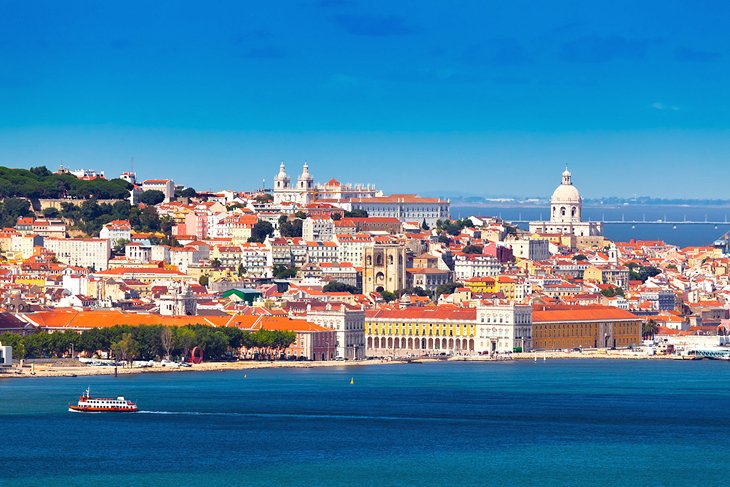
Highlights: Lisbon, Sintra, Estoril, Cascais
As the main point of entry for most travelers, Lisbon is Portugal's vibrant and cosmopolitan capital and is well served by an efficient and inexpensive public transport system. Forget the car. Compact and with a well-defined historical center, the city is ideal for exploring on foot, though some of its hills will test even the stoutest pair of legs.
Typically, a day's sightseeing commences with a ride on the number 28 tram. The quirky streetcar trundles and hisses its way across the downtown district and passes the castle, the cathedral, several museums, and other must-see monuments.
Joining a guided walking tour is another relaxing way to absorb city culture and a wonderful opportunity to mingle with the locals.
Using Lisbon's metro system is the quickest way to reach Parque das Nações and the Oceanário de Lisboa, one of Europe's largest aquariums and an absolute delight to visit. The riverfront esplanade makes for a leisurely stroll, or you can take the cable car for a bird's-eye view of the area.
The afternoon can be spent on the other side of the city, at Belém, where the beautiful Mosteiro dos Jerónimos, one of Portugal's most important historical monuments, is located. Nearby is the curious-looking Torre de Belém. Both are UNESCO World Heritage sites and should not be missed.
Allow a full day to visit Sintra, the most popular excursion option out of the city. An excellent rail link will get you there in about 40 minutes, and among the highlights are the splendid Palácio Nacional de Sintra, the fairytale Palácio da Pena, and the ancient Castelo dos Mouros. The entire region is recognized as a UNESCO World Heritage cultural landscape.
Along the Lisbon coast, the resort towns of Estoril and Cascais are naturally at their liveliest during the summer months. Both offer pristine beaches, crystal-clear waters, and plenty of leisure amenities. A long, broad seafront promenade affords a salt-laced walk between the two resorts, and there are plenty of accommodation options to choose from.
5. Central Portugal: Coast and Countryside
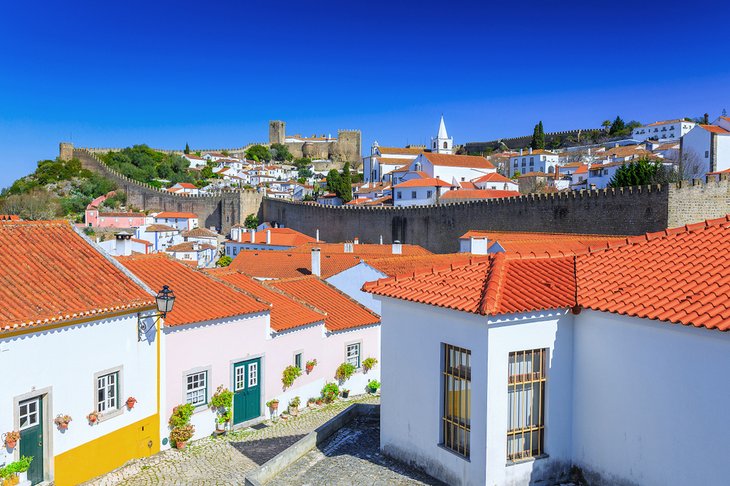
Highlights: Óbidos, Alcobaça, Batalha, Nazaré, Coimbra, Aveiro, Celorico da Beira, Serra da Estrela
Portugal's central region couples an extensive Atlantic coastline with a wildly contrasting interior, anything from expansive fertile plains to majestic mountain peaks.
Exploring these diverse provinces takes time and logistical planning. By way of introduction, it's probably best to focus your efforts along or near the coast by heading north out of Lisbon to the enchanting walled town of Óbidos - a beautiful picture-postcard destination.
An hour or so farther north is a real treat for history buffs, the magnificent Mosteiro de Santa Maria de Alcobaça, Portugal's largest church and deserving of its UNESCO World Heritage Site status. So, too, is the abbey at nearby Batalha, a masterpiece of Portuguese Gothic architecture and also protected by UNESCO.
If you're a surfer and traveling during November, you might want to divert to the coast and Nazaré. At this time of year, the swells are gigantic and reach record-breaking heights. Only the most experienced professionals dare ride them.
Depending on your priorities, you can instead choose to make Coimbra your first sightseeing priority by taking the motorway all the way to this venerable city, sited on the River Mondego. Its university is Portugal's oldest and complements a collection of outstanding churches and cathedrals.
Another option is to head straight for Aveiro. Set over a series of canals overlooking a patchwork of saltpans, the city is famous for its colorful seaweed-collecting moliceiros boats.
Coimbra and Aveiro are ideal stopover options before heading inland and discovering some of the most spectacular mountain scenery in the country.
If you have a few days, consider basing yourself in Celorico da Beira, a little bolthole renowned for its delicious Serra cheese. Nature lovers will be in their element, and there are plenty of long-distance paths for the more active to follow.
From here, be prepared to negotiate narrow roads and hairpin bends as you slowly wind your way up Portugal's highest mountains, the Serra da Estrela. If traveling in winter, keep an eye on the weather, which can be highly unpredictable. And if it snows, be prepared to share the summit with opportunistic skiers and snowboarders.
6. Oporto and Beyond: Rivers and Valleys
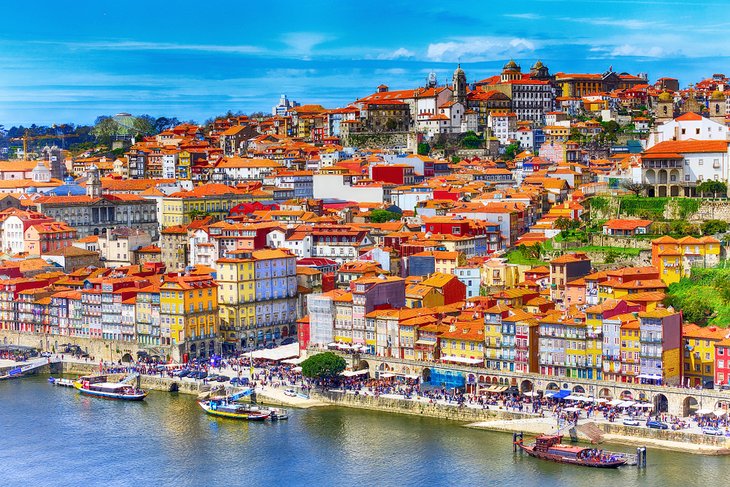
Highlights: Oporto, Douro Valley, Lamego, Amarante
As Portugal's second city, Oporto is served by an international airport and benefits from an extensive public transport network. A horrendous one-way system means driving in the city center should be avoided, if possible. Oporto is worth at least two days of your time sightseeing and is an obvious base from which to explore the Douro Valley, a UNESCO World Heritage Site.
Among Porto's must-see tourist attractions is the elegant 18th-century Torre dos Clérigos, which towers 75 meters above the streets. The Sé, or cathedral, is also of note. The historic Ribeira, or waterfront, is another UNESCO World Heritage Site. On the opposite side of the river, reached by crossing the landmark Ponte Dom Luís I, are the lodges of Vila Nova de Gaia.
One of the most relaxing ways of appreciating the city and the outlying area is to join a sightseeing cruise along the River Douro. A number of these excursions last a week and go all the way to Barca d'Alva, the last Portuguese village on the Douro and just two kilometers from the Spanish border.
An alternative way to experience the region is by scenic railway: the Douro Historic Steam Train runs from Peso da Régua and Tua on a one-day round trip, and skirts the river all the way.
Access to a vehicle facilitates a more exhaustive tour of the region, and you can easily detour to places like Lamego, known to pilgrims as the location of the elaborate Nossa Senhora dos Remédios church. Also within driving distance is Amarante, an attractive riverside town noted for its 17th-century granite-built mansions with brightly painted wooden terraces.
7. Northern Portugal: Cities and Mountains
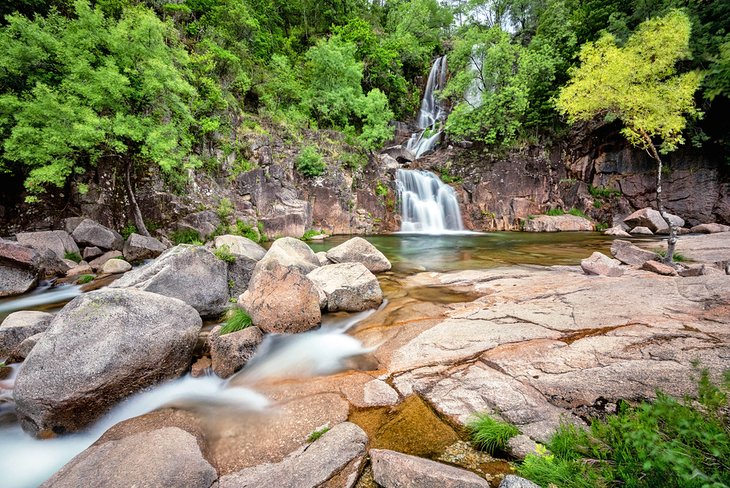
Highlights: Braga, Guimarães, Viana do Castelo, Ponte de Lima, Ponte da Barca, Parque Nacional da Peneda-Gerês
The northernmost reaches of Portugal provide an alluring and dramatic scenic backdrop, and if you've taken the trouble to travel this far, you'll be suitably reimbursed with a canvas of outstanding beauty.
If you're planning to explore over a week or so it's a good idea to ensconce yourself in Braga. The city has a long history as a religious center: in the 12th century it became the seat of Portugal's archbishops. Every Easter, Braga hosts the Semana Santa (Holy Week) festival, so book accommodation well ahead if you're visiting during this period.
Another city to consider is Guimarães. Celebrated in Portugal as the birthplace of the nation, its historical quarter is a UNESCO World Heritage Site. Spend a day in each to appreciate the sights.
The road system is good, with motorways joining Oporto with Braga and Guimarães. If you prefer to stay on the coast, base yourself in the wonderfully evocative maritime town of Viana do Castelo, where one of Portugal's most colorful festivals, the Romaria de Nossa Senhora d'Agonia, takes place towards the end of August.
Inland, the landscape is sown with fertile farmland and dotted with dozens of tiny hamlets and small towns. Squatting on the banks of the River Lima is Ponte de Lima, named after its Roman bridge. Similarly, Ponte da Barca, positioned further upstream, derives its name from a bridge dating from the 15th century.
Both these towns are stepping-stones to one of Portugal's greatest natural attractions: Parque Nacional da Peneda-Gerês. There's more than 720 square kilometers of parkland to explore, much of it windswept and mountainous. Hikers can follow a signed long-distance footpath - the best way to appreciate the region's rich variety of fauna. You can also pony trek some of the route.
By vehicle, be prepared for a long drive on often steep, narrow, and winding roads, but with plenty of laybys to pull into along the way for that magical photo opportunity. If convenient, plan the day to take in the traditional villages of Lindoso and Soajo, where day-to-day life has changed little over the centuries.
There's no circuit to follow as such, so leave enough time to return to your accommodation at a reasonable hour, especially in winter when it's dark by late afternoon.


